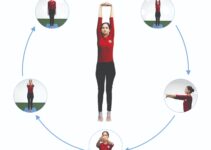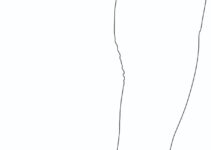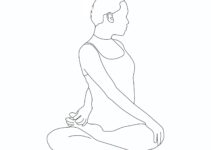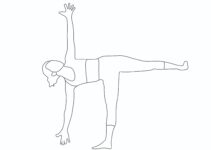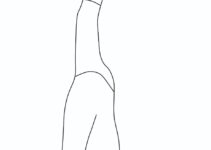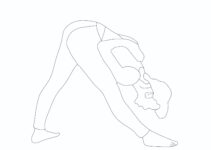Gomukhasana (Cow’s Face Pose)
Gomukhasana is an important sitting yoga pose. It is pronounced as “go-moo-KAHS-anna”, wherein go means ‘cow’, and Mukha means ‘face’. In Sanskrit, gomukha means ‘cow’s face’. This asana is so-called because it resembles the face of a relaxed cow. It is one of the best yoga poses for lung expansion and alleviating respiratory congestion.
In Sanskrit, gomukha means ‘cow’s face’. This asana is so-called because it resembles the face of a contented cow. At first, this may not seem obvious, but in time, you will find that the final pose does evoke some similarity with a cow’s face. It is more of a symbolic rather than an actual resemblance.

How to do Gomukhasana step by step?
- Sit erect, stretching both legs together in front. Place your hands by the side, palm resting on the ground with fingers together.
- Fold the left leg from the knee and place it on the ground by the side of the right buttock.
- Similarly, fold the right leg from the knee, bring it over the left leg and place the right heel by the left buttock.
- Raise the left arm, bend it at the elbow and take it below the shoulders towards the back.
- Raise the right arm, bend it at the elbow and take it upward and behind the back.
- Interlock the fingers of both hands behind the back.
- Now try to extend the head back against the elbow as much as possible.
- Gaze in front.
- Stay in this position as long as you are comfortable and return to the original work.
- Repeat the same by changing the position of the legs and hands.
- This is the one round. Do it in 2-3 games.
Gomukhasana benefits
- Gomukhasana is an excellent asana for inducing relaxation. Practising gomukhasana for at least ten minutes is strongly suggested if one feels tired, tense or worried.
- The practice of this asana strengthens muscles of the back and biceps.
- It removes pain in the hip and lower extremities.
- It helps in making the spine straight.
- This āsana is very useful in arthritis and dry piles.
- It is helpful in frozen shoulders, neck pain and cervical spondylitis.
- It gives good lung exercise and helps with respiratory diseases.
- It helps to ease away tension greatly. For this reason, it has been found very useful for helping to relieve ailments such as diabetes, high blood pressure and sexual malfunctions.
- It helps remove stiffness in the spine, neck and shoulders.
- It also develops the chest and improves breathing.
Scriptural references
- Gherand Samhita
- Hatha Yoga Pradipika
savye dakṣhiṇa-ghulkaṃ tu pṝṣhṭha-pārśve niyojayet | dakṣhiṇe|api tathā savyaṃ ghomukhaṃ ghomukhākṝtiḥ || 22 ||
Placing the right ankle on the left side and the left ankle on the right side gives Gomukha-âsana the appearance of a cow.22
Breathing
Releasing the abdominal wall and directing the breath into the lower abdomen helps the pelvic floor and hip joints release. Restraining the lower abdomen during inhalation runs the breath into the thoracic region, intensifying the stretching of the shoulder structures. The breathing should be standard in the final pose. Inhale slowly and exhale very, very slowly. It is also suggested that if you want to practise Ujjayi pranayama, it is better to do it to extract the maximum benefits of it.
Sequence
The sequence of Gomukhasana can be practised at any place and time. It can be done at any stage in your yoga practice program.
Gomukhasana precautions
- Upward and downward rotation of the scapula must precede adduction to avoid over-mobilizing in the shoulder joint.
- If the hip joints are not sufficiently mobile, excessive torque can result in the knee joints.
- Great care should be taken to avoid any strain on the knees because the menisci are most vulnerable when the knee joints are semiflexed
Contraindications
It should be avoided in the following cases
- Knee injury
- Spinal problems
- Elbow pain

